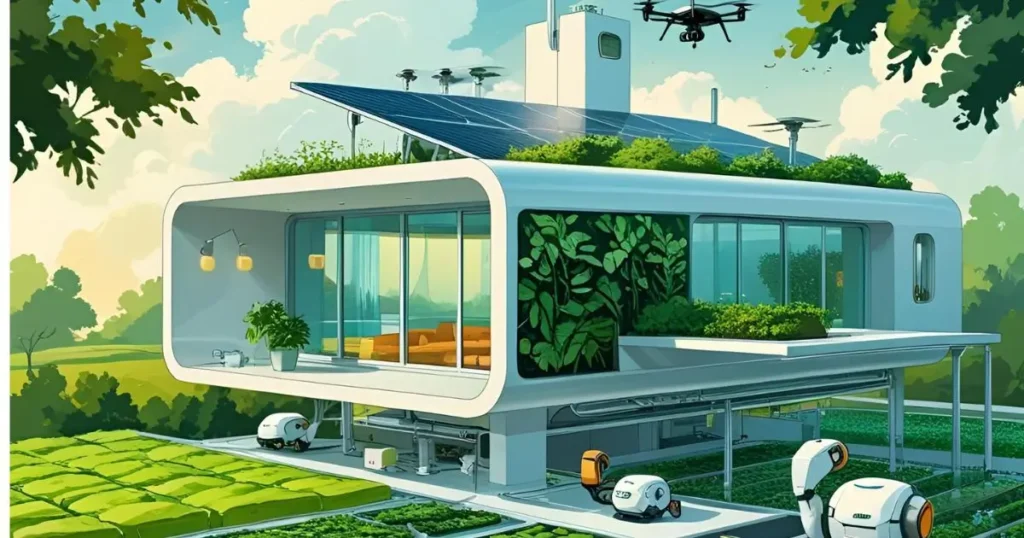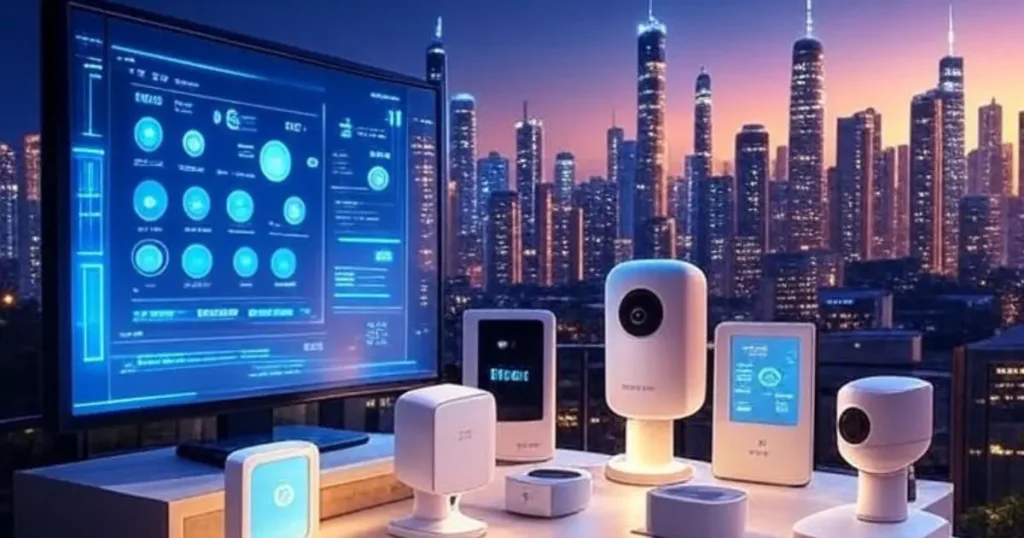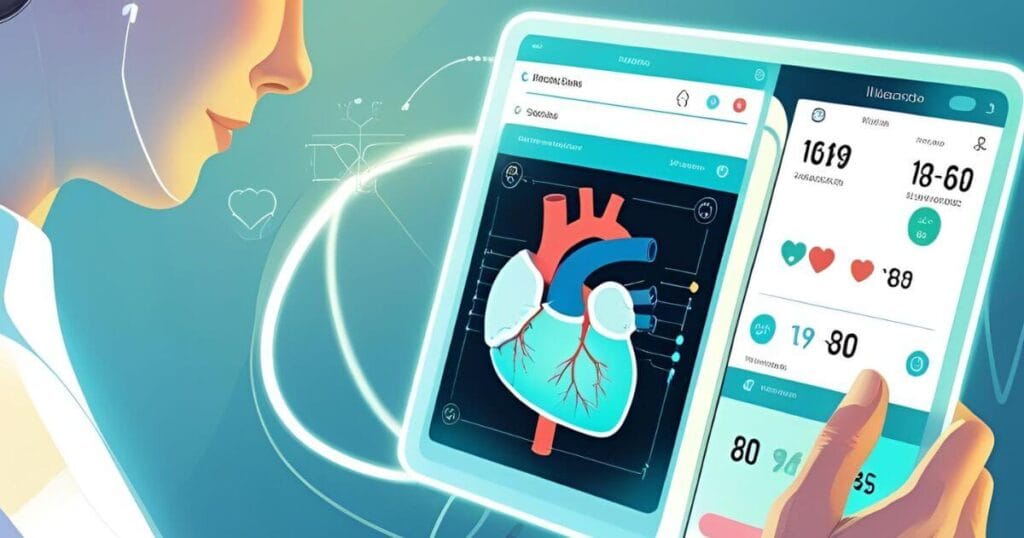The Internet of Things... you’ve probably heard the buzz. It’s not just about having a fridge that can tell you when you’re out of milk (though, that’s part of it!). It’s about completely changing the way we interact with, well, everything.
Topics Covered
Table of Contents
Think connected homes, factories humming with data, and a world where stuff just… works better. So, what exactly is this IoT thing? This is a look into its basics, what makes it tick, different flavors of it, the good, the bad, and some cool examples out in the wild. We’ll even peek into the crystal ball to see what the future holds, with whiz-bang technologies like 5G and AI making it even more awesome. You can read about our topic about agentic AI.
Here in this post we are we are going to explore, What IoT is? How it works? We learn about its types benefit and examples also we learn about different challenges and real world application of Internet of things.

What’s the Big Deal with the Internet of Things, Anyway?
Basically, the Internet of Things is just a fancy way of saying it’s a bunch of regular things – like your toaster, your car, or even that weird-looking machine in the factory down the street – that are now equipped with tiny brains. These brains come in the form of sensors, software, and, most importantly, a way to chat with the internet.
This lets them collect information and share it to get stuff done or give us some insight. For example, you know those smart speakers like the Amazon Echo? It can play your favorite tunes, dim the lights, or even restock your groceries—all with just a simple voice command.
And get this: these devices use sensors that pick up data – maybe the temperature in your house, or whether you’re actually working out during that workout class. This data zips off to a central hub, usually in the cloud (think of it as a giant online brain), where it gets crunched. Based on what it finds, the system can do something – like automatically bump up the thermostat when you’re on your way home from work. Pretty nifty, huh?
Believe it or not, this idea’s been kicking around since the late 90s. But it’s really taken off recently because sensors have gotten dirt cheap, internet speeds have exploded, and we’ve gotten way better at figuring out what to do with all this data. Some analysts like IoT Analytics predict that we’ll have over 29 billion connected devices by 2030! That’s more connected things than there are people.
How Does Internet of things Magic Actually Work?
It’s like a three-legged stool: you’ve got your devices, you’ve got the internet connection, and you’ve got the software that makes it all make sense. Let’s break it down:
The Gadgets Themselves: These are the physical “things” that are doing the work and they include:
Sensors:
These are the ears and eyes, gathering info like temperature, movement, or how far you are from the fridge. A fitness tracker is a prime example, constantly monitoring your heart rate.
Actuators:
These are the muscles, *doing* something based on the data. Think of a smart lock that unlocks your door when you get close.
Processors:
These little guys handle the basic thinking, deciding when to send data and what’s important.
Communication Modules:
This is how they talk to the internet, using Wi-Fi, Bluetooth, or even cellular networks.
Connectivity (aka, the Internet Plumbing):
This is how all these devices yak to each other.
Wi-Fi: High speed, good for home and office use.
Bluetooth: Short-range, great for stuff like smartwatches.
Cellular (3G, 4G, and 5G): Works just about anywhere, perfect for cars and mobile devices.
Low-Power Wide-Area Networks (LPWAN): Long range, uses barely any juice, perfect for sensors in far-flung places. (Think LoRaWAN)
Satellite: For devices waaaaaay out in the boonies, remote areas.
And speaking of whiz-bang technology, the rollout of 5G is set to really change things, offering crazy-fast speeds and lower latency. According to Mapsted, we’re talking about finally getting real-time applications like self-driving cars.

The Platform (the Brains of the Operation):
This is where all the data gets managed.
Data Ingestion: Sucking up all the info from the devices.
Data Processing: Crunching the numbers and making sense of it all.
Device Management: Keeping everything up to date and secure.
User Interfaces: The apps and dashboards that let you control everything.
Popular platforms include AWS IoT, Microsoft Azure IoT, and Google Cloud IoT. Oh, and something else to keep an eye on: Edge computing, where data is processed closer to the devices themselves, cutting down on lag. Mobidev has some interesting insights on this.
Security (Seriously Important):
With so many devices talking to each other, security is paramount. We’re talking encryption, airtight authentication, and constant updates to fend off those pesky cyberattacks.
Different Types of Internet of Things:
What Kind of “Things” Are We Talking About? The beauty of IoT is how versatile it is. It’s popping up everywhere. Here are some of the big categories:
1. Consumer IoT:
Making our lives easier and more connected.
Smart Homes: Nest thermostats, Ring cameras, Alexa – automating your home life like never before.
Wearables: Apple Watches, Fitbits – keeping tabs on your health.
Connected Vehicles: Tesla’s features, which provide real-time navigation and diagnostics.
2. Industrial Internet of Things (IIoT):
Boosting efficiency in factories and other industries.
Smart Factories: Machines talking to each other to optimize production.
Predictive Maintenance: Sensors anticipating equipment failures before they happen. Siemens solutions are pretty cool here.
Supply Chain: Keeping track of goods in real-time, from factory to store.
3. Commercial IoT:
Helping businesses run smoother.
Retail: Smart shelves that track inventory, and beacons that send you personalized deals when you walk into a store.
Healthcare: Remote monitoring devices that keep an eye on patient vitals, letting doctors provide care from a distance.
Smart Offices: Automated lighting and AC to save energy.
4. Infrastructure IoT:
Supporting our cities and public systems.
Smart Cities: Seoul’s AI-powered traffic systems are a great example.
Environmental Monitoring: Sensors tracking air and water quality.
Energy Grids: Smart grids that balance energy supply and demand.
5. Military Internet of things (IoMT):
Enhancing defense operations.
Surveillance Drones: Getting a bird’s-eye view of the battlefield.
Battlefield Data: Sensors tracking troop movements and conditions.
Smart Weapons: Data-driven, precise targeting.
| IoT Type | Key Applications | Examples |
| Consumer IoT | Smart homes, wearables, connected vehicles | Nest, Fitbit, Tesla |
| Industrial IoT (IIoT) | Smart factories, predictive maintenance | Siemens predictive maintenance, supply chain tracking |
| Commercial IoT | Retail, healthcare, smart offices | Smart shelves, remote patient monitors |
| Infrastructure IoT | Smart cities, environmental monitoring | Seoul traffic systems, air quality sensors |
| Military IoT (IoMT) | Surveillance, battlefield data, smart weapons | Drones, real-time data systems |
The advantages of: Why Should You Care?
Makes life easier: Automation is key. Turning off lights, scheduling appliances – it all adds up to save time.
Saves you money: Predictive maintenance and resource optimization cut costs, especially in industrial settings.
Smarter Decisions: Tons of data leads to better business and personal choices.
Safer and More Efficient: Monitors hazards, streamlines processes, and reduces errors.
The Gotchas: What Are the Challenges?
Security and Privacy (Big Ones): Billions of devices mean billions of potential entry points for hackers. Strong security is a must.
Interoperability (The Compatibility Nightmare): Different devices use different languages, making them hard to get to work together.
Connectivity (You Need Internet!): No internet, no IoT. Spotty coverage in rural areas is a major limitation.
Where is this Stuff Actually Being Used?
Smart Homes: Manage lights, locks, and cameras via a single app like Google Home, saving energy and enhancing security.
Smart Agriculture: IoT sensors keep a close eye on soil moisture and crop health. Drones even survey fields, optimizing irrigation and cutting down on waste. Fortune Business Insights reports that yields can increase by up to 20%.

Healthcare Monitoring: Wearables and remote monitors track vital stats, letting doctors provide personalized care without hospital visits.
Connected Cars: Tesla cars use IoT for over-the-air updates and real-time traffic data.
Looking Ahead: The Future of IoT
5G is going to Be Huge: Faster speeds and lower latency mean more devices and more real-time applications, like those self-driving cars.
AIoT (AI + IoT): The ultimate combination, making devices smarter than ever before. AIoT systems can even predict equipment failures, reducing downtime by up to 50%.
Edge Computing: Processing data closer to the devices, cutting down on lag and bandwidth.
Sustainability: IoT helps us be greener, supporting smart grids and environmental monitoring.
Blockchain: Enhancing IoT security by securing data transactions. Binariks notes that security is a major step forward.
“Loriot projects the IoT market to reach $629.5 billion by 2025, with a 17.5% CAGR.”
That’s explosive growth!
Final Thoughts: The IoT Revolution
The Internet of Things is changing the world, making life easier, safer, and more sustainable. From smart homes to smart cities, the possibilities are endless. As 5G and AIoT continue to develop, the potential of IoT will only grow. For the latest tech trends, be sure to check out hstech.io to see how IoT is shaping the future!
FAQ‘s
1. What are the main flavors of IoT?
Ans. Consumer IoT (smart homes, wearables), Industrial IoT (factories, maintenance), Commercial IoT (retail, healthcare), Infrastructure IoT (smart cities), and Military IoT (drones, weapons).
2. Is IoT part of AI, or are they separate?
Ans. IoT collects data, while AI analyzes it. AIoT is the combination of both, creating smarter systems.
3. Where IoT is used most?
Ans. Smart homes, healthcare, industrial automation, and smart cities are all big areas for IoT, with the consumer and industrial sectors leading the way.
Pingback: Industrial IoT and Healthcare IoT-Its best 7 key benefits